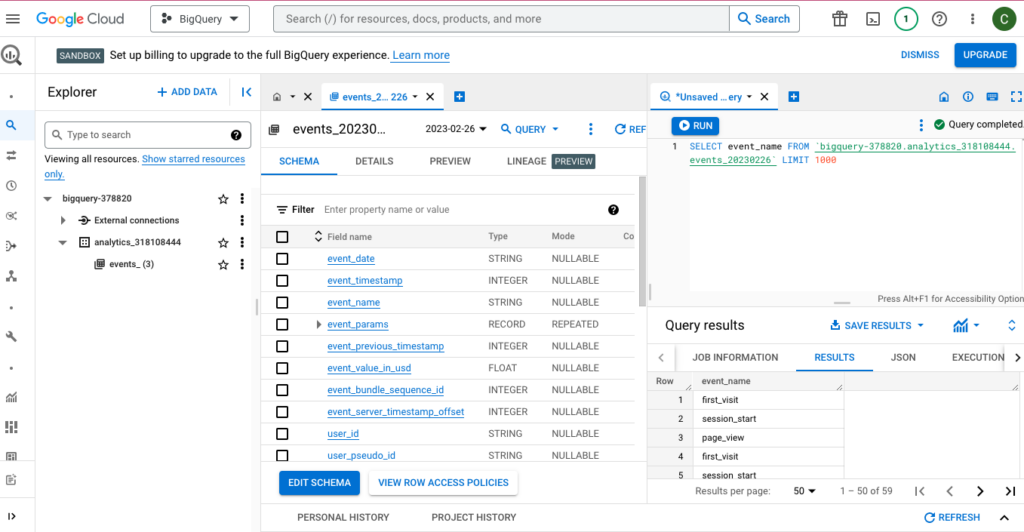If you’ve read anything about Google Analytics 4, chances are you’ve noticed the big points: New data model! Everything is event-based! Simplified reports! (If those don’t sound familiar, we recommended starting with our basic overview of what’s changing in GA4.)
These exciting (or exhausting) changes remind us that Universal Analytics is still using the same model it has for 10 years, and GA4 represents how we use the Internet now.
These updates appear above the fold to make people pumped up for the GA4 changes, but what about the content below? In many lists, including our own, data retention falls at the end, almost like a sidenote.
Why we care about data retention
No matter where it falls in the hierarchy of online resources, it’s important to consider. Data retention refers to the amount of time your information is stored. It’s likely you’ve never considered this with Universal Analytics because of its handy option to keep your data without expiration.
Data informs everything we do in marketing. The best ideas don’t stand a chance if you can’t prove they’re effective. Measuring is one of the core aspects of the job, and the ability to reference historical data at will with Google Analytics is incredible.
But now that’s going away (kind of). Stick with me.
The GA4 data retention policy
When you create your new GA4 property, your data storage is automatically set at two months. The good news is you can extend it up to 14 months, but that’s it. (Psst … if you haven’t updated this yet, you’ll find the option in Admin > Property > Data Settings > Data Retention.)
So, does this mean you can’t go back more than a year when looking at historical data? Yes and no.
Data in Reports vs. Explore options in GA4
In the Reports area, you can access data beyond the 14-month threshold. This means all your basic reporting, like acquisition and engagement, can look at the lifetime data of GA4. You cannot, however, access data beyond that period in the Explore area.
The reason for this is aggregated (summary data) vs. disaggregated data (breaking down summary data into specific sections).
The Reports functionality looks at website data without specific filters or segments applied. This provides you with the basic overview of what’s happening. Explorations allow you to dive in deeper to your data, like if you want to view how users follow a specific path, what campaign traffic looks like, and more.
TL;DR: After you create your GA4 property and it’s running, you can use the data to populate reports with basic website information. More complex reporting, including segmentation, won’t allow you to look at data beyond 14 months.
What about historical data in Universal Analytics?
We can’t talk about data retention without mentioning the elephant in the room: the years of stored information in Universal Analytics. Here’s what we know from Google:
- Universal Analytics will continue to process information until July 1, 2023.
- After that, you’ll have through the rest of 2023 to access your data.
- A specific date for when the Universal Analytics properties go away isn’t set, but Google strongly recommends using the time after July 1 to export any historical data you’ll want to access.
This all leads to the decision point: what should we do with our data?
GA4 data storage solutions
The good news is we have options for managing our data. Even better, they run the gamut of the level of intensity you’re looking for, whether you want access to everything so you can review complex reports, or you realize your level of data reporting doesn’t require anything fancy.
Option 1: Big Query (or a similar data warehouse)
A product of Google Cloud, BigQuery is a data warehouse that welcomes daily or continuous exports from GA4. The free version, available to all GA4 properties, allows 10GB of data storage. Worried about going over? Every GB after either costs $0.02 for active storage or $0.01 for long-term storage, making BigQuery seemingly cost-effective.
So, what’s the catch? It’s not the same as reviewing your data like you could with Universal Analytics. It involves using SQL, a language that “queries” the data to provide you with a look at the information, like a report in Universal Analytics.

Think of it like this: You’re standing in a giant warehouse. Every day, you receive new shipments of product (daily data dumps from GA4). Additionally, you also brought products from your old warehouse (historical data from Universal Analytics). Now, you find yourself standing in a space with piles of items and no way to sort them.
Time for an organization system, right? That’s where SQL comes into play (for our data warehouse).
You use the coding language to write commands that will manipulate your data to show you what you need. With it, you can combine your current and historical data, pull information from a specific time period, and so much more.
Plus, with Big Query, you can visualize the data directly in Looker (formerly known as Google Data Studio).
Unless you already speak SQL, there’s no denying the learning curve with BigQuery. But if you want access to all your raw data that can be assembled and visualized, it’s probably worth the lesson.
Other data warehouse options
BigQuery is just one of many cloud-based data warehouses available. The free tier from Google because of the connection is nice, but it doesn’t mean it’s the best option for you. If you’re interested in learning more about other companies, check out some of these BigQuery competitors:
Option 2: Marketing analytics software
What if you want a simpler option to visualize your data? That’s where marketing analytics software comes to play. Pro: many of these choices make it easier to see and analyze your data. Con: they’re often the pricier option.
Companies in this category vary, with some requiring no coding and others dipping back into the SQL pool. Picking a winner from these options would depend on what you specifically need, and what works with your budget.
Here are a few examples to consider:
Option 3: Exporting your data
This is where we ask the question “how much are you doing with your data now?” Do you need fancy visualizations and the option to answer questions from a deep well of raw data? For some of us, the answer is absolutely. But not for all of us.
A completely valid option involves exporting specific data you want, when you want, and storing it yourself. Determine what you think you’ll need and have it ready to review if needed.
You can export as much or as little as you choose, depending on your specific needs and plans for growth. All you need is a system in place for when this happens and where you plan to keep it.
Option 4: Letting 14 months be long enough
How often do you go beyond year-over-year data? When is 14 months not enough? Are you currently doing annual reporting that would cause these numbers to live somewhere in a presentation on your server?
In most cases, YOY is the longest comparison you’ll consider in your reporting. The pandemic affected this, with 2020 and 2021 to an extent not being as reliable in terms of numbers, but it seems we’re back on a steadier path for data.
Based on your current efforts, the data retention period in GA4 may be enough for you already. Isn’t that a nice thought?
What should you do?
Obviously, I can’t tell you what will work best for your organization. Your needs are likely very different from what I’m facing. But I can give you a sneak peek into where I land with all of this.
Working at an agency, it’s not always a blanket response for us. Our clients have different uses for their data, and we’re dedicated to finding the right solution for everyone. If I was thinking of my own business, however, this would be my approach.
- Focus on YOY data primarily. I won’t argue it’s handy to look back on previous years to measure performance, but I can’t say it’s always necessary. Especially when I know I’ve presented these numbers and they exist in documents I’ve saved. You can get lost in thinking about what you wish you had when in reality you may never need it.
- Export what you think is important. Listen, just because I think YOY is where I’ll focus primarily doesn’t mean I won’t want some other reports just in case. Being prepared is part of being a marketer. At least for the first couple of years, I’d export the annual data most important to me, likely related to specific campaigns. This way I’ll have them on hand if needed, and if I never need them, I can stop exporting.
- Play around with BigQuery. The first time I looked at the setup, I was overwhelmed, but that’s not an uncommon response as a digital marketer. There are always new things to learn that can make me better and help me grow as a team member. At this point, with the number of users to our website, we’re safely in the free threshold, so I have time to decide if it’s worth learning SQL and using it as my data retention option. This way I’m not dependent to start, but I’m funneling in my GA4 data so it’s there.
It’s true, none of these steps include marketing analytics software, but that doesn’t mean they aren’t a valuable option. The most important point from this conversation is reflecting on your individual needs. There isn’t a right or wrong approach, just the one that works for your efforts.
Looking for additional help with GA4 or data retention? Get in touch with us today!


